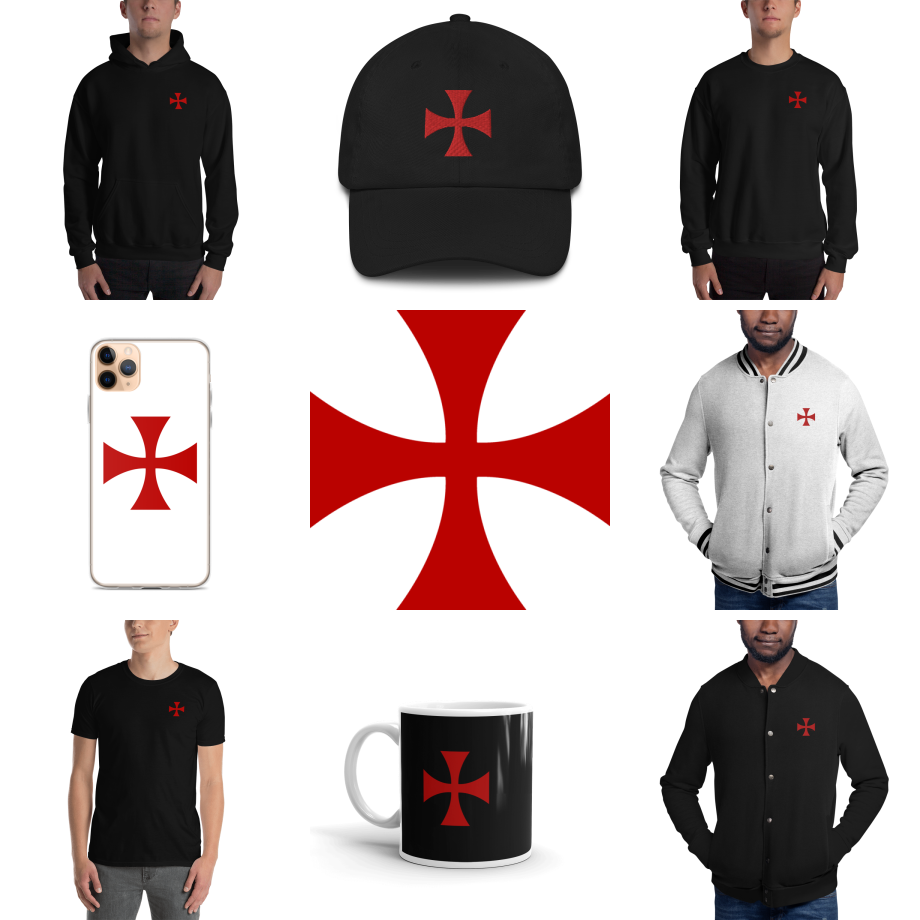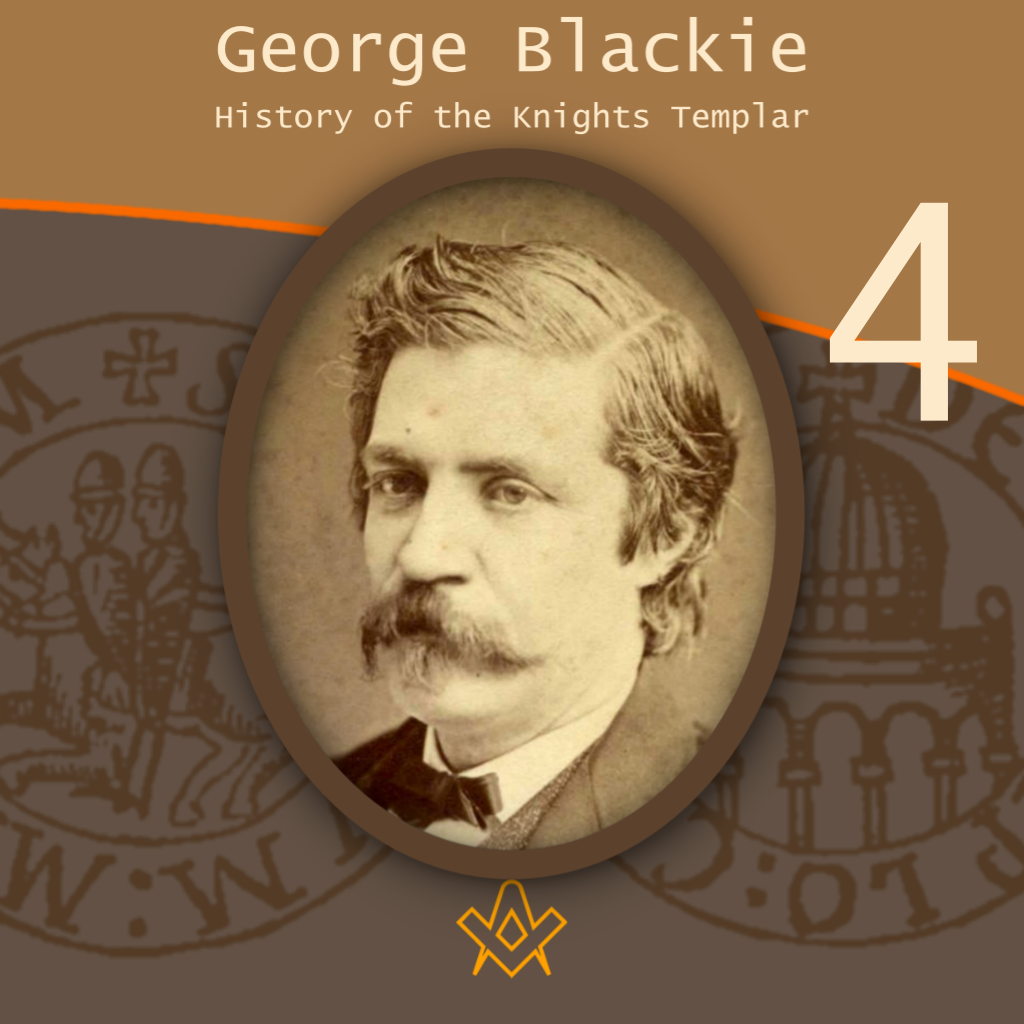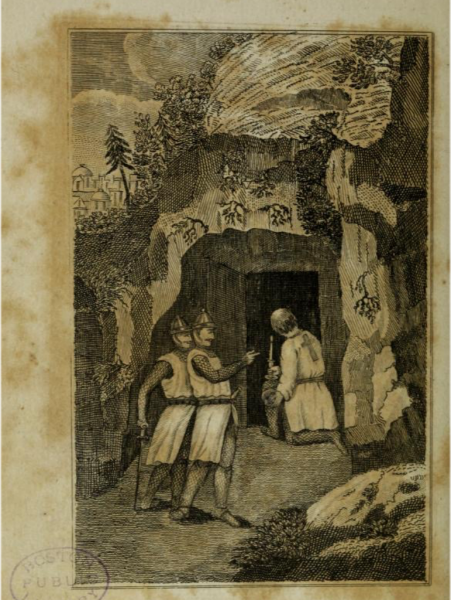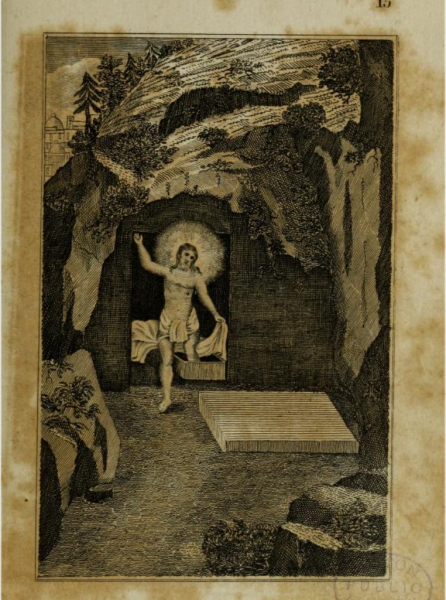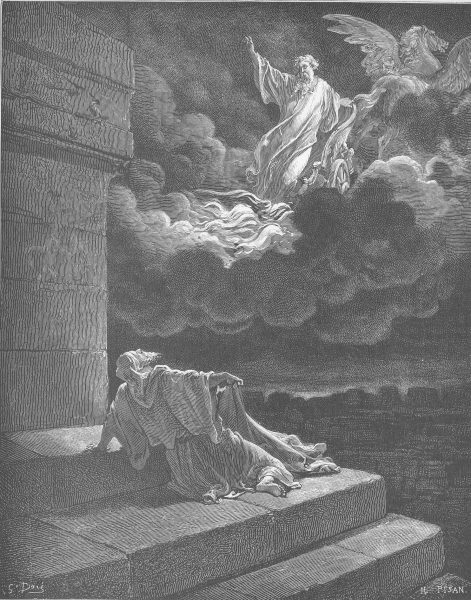The final part in the serialisation of George Blackie’s ‘History of the Knights Templar and the Sublime Teachings of the Order’ transcribed by Kenneth Jack.
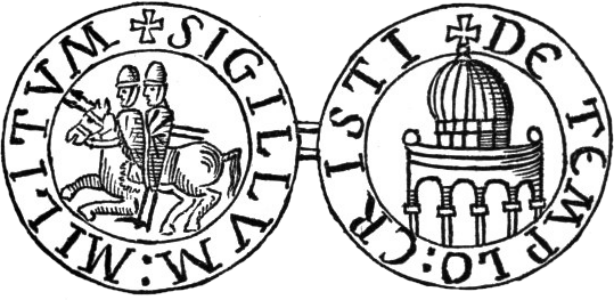

George Blackie – The History of the Knights Templar P.1
First part in the serialisation of George Blackie’s History of the Knights Templar and the Sublime Teachings of the Order – by Kenneth Jack
more….

George Blackie – The History of the Knights Templar P.2
Second part in the serialisation of George Blackie’s ‘History of the Knights Templar and the Sublime Teachings of the Order’ transcribed by Kenneth Jack.
more….

George Blackie – The History of the Knights Templar P.3
Third part in the serialisation of George Blackie’s ‘History of the Knights Templar and the Sublime Teachings of the Order’ transcribed by Kenneth Jack.
more….
In Scotland, about the commencement of the reign of James IV., a union was effected between the Knights of the Temple and those of St. John, and their lands were consolidated.
This continued till 1560, when the Act of Reformation prohibited all allegiance in the realm to the See of Rome.
The Knights Templar then lost their estates, and existence as a military body, but unwilling to drop their ceremonies, they fraternised with the Freemasons, and continued to receive postulants in their Lodges.
The Order, as I have very fully detailed in the April number of the “MASONIC RECORD,” and need not here repeat, gradually split into two branches, a Democratic, or Masonic, and an Aristocratic, or Chivalric.
The former had many heads, the latter one alone, who is Grand Master of the World, and resides in Scotland. The Democratic branch, was, ere long, carried by Freemasons to England and Ireland.
The three original Encampments in England were at Bristol, Bath, and York. The Bristol Encampment claims to have been originally established by the Knights who returned from Palestine with Richard I., but it had been suppressed by King Edward, and had disappeared.
From these Encampments have emanated all the other Encampments in England and the United States, so that the Order, as it now stands in England and America, must be viewed as a lineal descent from the Scottish Priories, and these, history proves to be the legitimate descendants by adoption, of the original Knights of the Order.
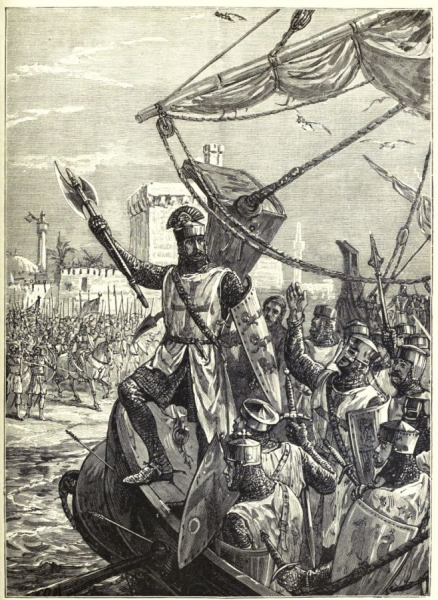
IMAGE LINKED: wikimedia Attribution 4.0 International (CC BY 4.0)
Thus, Fratres, I have endeavoured to give a hasty, but I trust, not uninteresting, sketch of our past history.
The success of the future lies with ourselves and our comrades. Let us ever bear in mind the heroism of our suffering Brothers of the fourteenth century, and try to imitate their courage, constancy, and valour.
I had intended to have added, this evening, a slight sketch of the history of the Knights of Malta, and their connection with us, but time warns me to defer it to another occasion.
I cannot, however, close this sketch of our history, without returning to the main incident of my address, and viewing the just retribution with which the hand of Providence visited our ancient unmerciful persecutors.
Are these authentic facts not a fulfilment of the promise of a curse on him who injures the hair of the head even of one of Christ’s little ones?
Clement died suddenly, within six weeks of the martyrdom of the Grand Master, and Phillip was killed by a fall from his horse before the close of the year.
Under the influence of a not unnatural superstition, it became a popular belief that de Molay, while consuming at the stake, summoned his two powerful persecutors to meet him at the judgement seat of heaven, within the short periods to which they actually survived.
But the most striking retribution was that of the cruel Marigny, the chief adviser of the monarch, and master-agent of the diabolical deeds.
The death of the King depriving him of protection, his rivals, headed by Count de Valois, uncle of the new King, Louis X., drove him from his post, and eventually imprisoned both him and his friends.
He was confined in irons in the very Temple of which I have spoken. Here it was attempted, by torture, to extort from him a confession of the crimes with which he was charged.
These charges were just as groundless as those he had brought against the Templars. Failing to compel his confession, he was kept in chains, bound neck and knees.
At length, the most terrible charge of the age, sorcery, was fastened on him. He was accused of attempting to cause the death of the King and his friends, by forming images of wax, and sticking them full of pins.
How his heart must have burned at the recollection of the Templars, as he found his own life about to be sacrificed to charges as absurd, as unfounded, and so exactly a counterpart, to those he had fastened on the Knights.
On this charge he was actually condemned, and hanged upon the gibbet of Montfaucon which he had himself erected for other victims. Thus, may all the enemies of our Order perish!

Enguerrand de Marigny being hanged. From the Chroniques de France ou de St Denis, BL Royal MS 20 C vii f. 51.
IMAGE LINKED: wikimedia Attribution 4.0 International (CC BY 4.0)
And now, Knights, though we are no more in the field, battling against Paynim foes, Turks, Jews, and Heretics, we are still engaged in a noble warfare.
We have to fight in defence of innocent maidens, destitute widows, helpless orphans, and the Christian religion.
“We wrestle not against flesh and blood, but against principalities, against powers, against the rulers of the darkness of this world, against spiritual wickedness in high places.”
We are the representatives of Christianity in Freemasonry; our legends are those of the New Testament; our ceremonies and symbols illustrate the connection between Ancient Craft Freemasonry and the Christian religion, and our principles and tenets, and teachings, are those imparted to us by EMMANUEL, the great Corner-stone of our Craft.
At this season of the year, in common with the oldest Churches of Christendom, we celebrate the conclusion of the divine mission of Christ, and it is well for us, before parting, to look over the history of our Faith, and impress on our minds why we are assembled here this evening.
I need not reiterate the history of our Saviour’s life; it is unnecessary to do so to you, even did time permit; but I will glance, for a few moments, at the chief events of the life of our risen Redeemer.
The great trial had ended; the immortal Victim had expiated the sins of wicked man on the cross; all Nature had declared her abhorrence of the act, and her mighty throes had even disturbed the sleep of certain saints, who had been long interred in the tomb; the few and sorrowing faithful had placed the loved corpse in its vault, and had gone home saddened, and perhaps doubtful.
For was not this Lord of theirs gone- gone forever- the way of all flesh? Could they understand His assurances that it was but for a little while? – that on the third day He would rise again?
Hardly could they have conceived that He would so soon burst the chains that bound him in an ignominious death, and rise triumphant, to gladden them once more with his presence, to console them with his words, his gentle admonitions, his earnest precepts, and his tender promises.
Full of gloom and apprehension must their hearts have been during that eventful last day of the week. It may have been their faith was shaken. They looked on this Jesus as a mortal, like themselves, or a false prophet, or a weak philosopher.
But the women, ever fond, and true, and faithful, hoping against hope, believed. The prejudices of the Jews had kept them from visiting the tomb which contained the cherished remains of their friend on the Sabbath, but they spent it weeping beside his cross, and watching for the rising sun of the first day.
And when its rays began to gild the domes and minarets of the Temple, they started to the tomb to weep there.
But lo! They had come too late! The stone was rolled away; no Roman guard was near; the body of their Lord was gone!
An angel was in its place, who told them their Lord was risen, and directed them to inform the disciples to seek him in Galilee.
Women like they did not stay to question, to criticise, but full of faith and hope, and hearts overflowing with incomprehensible joy, they sped to tell their friends. But these smiled at the foolish fancies of hysterical women.
“Their words appeared as idle tales,
and they believed them not.”
Peter and John alone thought the matter worthy of consideration, and started off at once to the sepulchre. Ardent and impulsive as Peter was, he was outstripped by the wings which love lent to John.
Mary Magdalene came slowly up behind. The men, on their arrival, examined the cave closely; they saw it was empty, and the linen clothes were folded neatly away in its dim recesses.
IMAGE LINKED: wikimedia Attribution 4.0 International (CC BY 4.0)
They at once concluded that in the grey light of the morning, these had deceived the eyes of the women, and they attributed the rest of their story to an excited imagination.
So, they left the spot, perplexed and sorrowful, and more strengthened in their dawning scepticism.
But Mary, whose hopes had been raised again, and who now, timidly gazing into the tomb, found them dashed to pieces by another blow, which, from its reaction, was as great as the first, remained there weeping, convinced that the tomb had been rifled by some vindictive foe, whose vengeance the expiation of the cross could not appease.
Heart-broken, and bowed in anguish, Mary heard, indistinctly, the voice of her loved Lord, and faintly gazing at the speaker through her tear-bedewed eyelids, she mistook his re-invigorated form for that of a stranger.
Nor, until He, in the well-remembered accents of a voice sweeter than any which has since vibrated in this atmosphere, said to her softly, “Mary,” was it that, at last, she fully realised, in her wondering faith and love, that her Lord was not dead; that he had risen victorious over the tomb and the grave.
In one word, she uttered her glad cry of recognition, “RABBONI!” Yes, ‘twas he, her Excellent Master, our Excellent Master, Prophet, Priest, and King.
Joyously she bounded homeward, and, with eager voice, told her tale, confirming the previous report. But the mourning heart is not so easily consoled.
Too full of sadness were the hearts for any ray of hope to enter, and, as St. Mark says, they,
“when they heard he was alive,
and had been seen of her, believed not.”
It was on the same day that two of the disciples, on a journey to Emmans, conversed on the great events which had occurred recently at Jerusalem.
As they talked, a stranger joined them, entered into their conversation, and taking the part of their former hopes against their present fears, showed them all the Scriptures, convincing them that while they, in their sorrow, had assumed that this Jesus could not be the Christ, because he had suffered such things, notwithstanding this assumption, he could not be the Christ unless he had suffered all these things.
This stranger joined them in their evening meal, and as he broke bread with them, something in the act opened their eyes, and they recognised their Lord, who vanished from their sight.
His manner of disappearance, like all his goings and comings after his resurrection, was mysterious, and unlike anything that had taken place before. His body was no longer subject to the same laws as ours, and to which his had formerly submitted.
IMAGE LINKED: wikimedia Attribution 4.0 International (CC BY 4.0)
Full of joy, they returned to Jerusalem with their news. And now the great floodtide of joy was every moment rising higher and higher.
While the disciples were, that night seated at a late supper, some doubting, others believing, of a sudden, despite the closed doors, Jesus stood in the midst of them. Startled at first, they believed that they had seen a spirit, but were soon satisfied by sight and touch.
And how welcome indeed must this confirmation of their rising hopes have been! – a joy far transcending all experience. One was not with them at the time, Thomas, a rationalist, a constitutional doubter.
No evidence but touch would convince him of the truth of a fact so contrary to all his experience. “Except,” said he, “I shall see in his hands the print of the nails, and put my finger into the print of the nails, and thrust my hand into his side, I will not believe.”
Now when the devil asked for ocular demonstration on the mount, Jesus rebuked him, and denied it; when the unbelieving multitude called for a sign, he declared that no sign should be given them, save that of the prophet Jonas, but when the doubt came from an honest sceptic, with a loving heart, Jesus rejected it.
Accordingly, a fourth time he stood in the midst of his disciples, and commanded the shrinking, trembling doubter, to touch the scars on his blessed body.
The doubts of Thomas could not withstand the compassionate tenderness of Christ’s love, and refusing to lay unholy hands upon that holy form, in an ecstasy of gratitude and remorse, he exclaimed, “My Lord and my God!” It is evident that, though in these interviews Jesus had indicated the future mission of his disciples, and promised divine aid for its accomplishment, yet they little understood the work before them.
They seemed to have remained together more from habit than fixed plan, and they returned to Galilee, and followed their trade of fishing.
Here, for the fifth time, Jesus appeared to them, shared their meals, and conversed with them as of old.
Of these visits, St. John has given us detailed and specific accounts. Other appearances are briefly mentioned by the other apostles.
Once he met some of them by the way; once James saw him; again, five hundred brethren at once; and finally, he gathered his disciples together near Bethany, not far from the scene of his untold suffering and mighty triumph, and as he spoke, was parted from them, and a cloud received him out of their sight.
This outline of the gospel narrative, brief as it is, distinctly shows that the fact of the resurrection is attested, not by persons predisposed to believe, but by sceptical critics hard to be convinced.
We celebrate this evening, Knights, Thursday, the 25th day of the month Iyar, the 18th of May, in A.D. 30, accepted chronology.
It is true that today is the 6th of May, but an old-established Church rule has determined that Easter, one of its chief festivals, shall always be the first Sunday after the full moon which happens on or next after the 21st day of March, unless the full moon happen on a Sunday.
It was on the fortieth day after his glorious resurrection that the disciples were together with Christ, receiving his latest instructions, and learning the folly of their expectations of the Son of Man coming to form a great temporal monarchy.
As they walked together, listening eagerly to his latest words, he led them out over the fields they had travelled together six weeks before, when he was on his way to his death, as far as Bethany, on the further slope of the Mount of Olives, and so out of view of the city.
The spot is not positively known, though superstition and fanaticism point it out, and have built a mosque upon it, and ignorant folly tells idle tales for traveller and stranger to hear.
Very beautiful and wild is the scenery, the brook of Kedron winding by the Gardens of Gethsemene, the valley of Jehoshaphat, and the sites of the homes of Martha, and Mary, and Simon.
No spot on earth can command a scene more calculated to thrill its beholder. Here stood Jesus, and as, with uplifted hands, he gave his chosen ones his blessing, a cloud interposed between him and them, like the chariot and horses of fire which separated Elijah and Elisha, and, borne upward on this aerial car, he was wafted through the vault of heaven.
This was what was seen to mortal eye, but the inspired Psalmist had long before described its unseen glories:
“The chariots of GOD are twenty thousand even thousands of angels; the LORD is among them, as in Sinai, in the holy place. Thou hast ascended on high, thou hast led captivity captive; thou hast received gifts for men; yea, for the rebellious, also, that your Lord GOD might dwell among them.”
IMAGE LINKED: wikimedia Attribution 4.0 International (CC BY 4.0)
Meanwhile the disciples, stupefied by the suddenness of the event, and forgetting, in the first shock of surprise, all that had been foretold, stood gazing up, till they were awakened from their stupor by the appearance of two angels standing before them, and declaring that:
“this same Jesus, who was taken from them into heaven, should so come in like manner as they had seen him go into heaven,”
words which exclude any other than the final advent of our LORD, and teach us that he shall be seen descending from the riven sky as plainly and unexpectedly as they had seen him pass into it.
With this agree his own warning of “the sign of the Son of Man coming in the clouds of heaven, with power and great glory,” and the words of the final Scripture prophecy, “Behold, He cometh with clouds, and every eye shall see Him!” The angels returned to do the bidding of their father, the disciples worshipped their glorified GOD, and hastened, full of joy, to Jerusalem.
They passed their next period of waiting for the coming of the promised Spirit, unremittingly in the Temple, praising GOD, and blessing him for the “splendid conclusion of the hallowed sacrifice offered by the Redeemer of the World, to propitiate the anger of an offending deity.”
The eternal son of GOD has humbled himself to be born of a woman, had endured the pains and afflictions incident to human nature, had suffered a cruel and ignominious death upon the cross, and descended into the place of departed spirits; but, on the third day, had burst the bands of death, triumphed over the grave, and, in due time, ascended with triumphant majesty to Heaven, where he now sits at the right hand of our heavenly father, a mediator and intercessor for all those that have faith in him.
Well might they rejoice! Well may we, holding this as the firm faith of our Order, our consolation in trouble, our hope of glory, rejoice with them.
“Jesus hail! Enthroned in glory,
There for ever to abide!
All the Heavenly Hosts adore thee,
Seated at thy Father’s side!
There for sinners thou art pleading,
There thou dost our place prepare,
Ever for us interceding,
Till in glory we appear.
Worship, honour, peace, and blessing,
Thou art worthy to receive;
Loudest praises, without ceasing,
Meet it is for us to give!
Help! Ye bright angelic spirits,
Bring your sweetest, noblest lays;
Help to sing our saviours merits,
Help to chant Emmanuel’s praise.”
“Therefore, with angels and archangels, and all the company of heaven, we laud and magnify his glorious name, evermore, praising HIM, and saying ‘Holy, Holy, Lord GOD of Hosts! Heaven and earth are full of the majesty of thy glory!”
Article by: Kenneth C. Jack
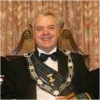
Kenneth C. Jack FPS is an enthusiastic Masonic researcher/writer from Highland Perthshire in Scotland.
He is Past Master of a Craft Lodge, Past First Principal of a Royal Arch Chapter, Past Most-Wise Sovereign of a Sovereign Chapter of Princes Rose Croix.
He has been extensively published in various Masonic periodicals throughout the world including: The Ashlar, The Square, The Scottish Rite Journal, Masonic Magazine, Philalethes Journal, and the annual transactions of various Masonic bodies.
Kenneth is a Fellow of the Philalethes Society, a highly prestigious Masonic research body based in the USA.
Recent Articles: Kenneth C. Jack
 Observations on the History of Masonic Research Archaeology is often associated with uncovering ancient tombs and fossilized remains, but it goes beyond that. In a Masonic context, archaeology can be used to study and analyze the material culture of Freemasonry, providing insight into its history and development. This article will explore the emergence and evolution of Masonic research, shedding light on the challenges faced by this ancient society in the modern world. |
 Anthony O'Neal Haye – Freemason, Poet, Author and Magus Discover the untold story of Anthony O’Neal Haye, a revered Scottish Freemason and Poet Laureate of Lodge Canongate Kilwinning No. 2 in Edinburgh. Beyond his Masonic achievements, Haye was a prolific author, delving deep into the history of the Knights Templar and leaving an indelible mark on Scottish Freemasonry. Dive into the life of a man who, despite his humble beginnings, rose to prominence in both Masonic and literary circles, leaving a legacy that continues to inspire. |
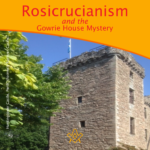 Rosicrucianism and the Gowrie House Mystery Unearth the mystifying intersections of Rosicrucianism and the infamous Gowrie House Mystery. Dive into speculative claims of sacred knowledge, royal theft, and a Masonic conspiracy, harking back to a fateful day in 1600. As we delve into this enthralling enigma, we challenge everything you thought you knew about this historical thriller. A paper by Kenneth Jack |
 Thomas Telford's Masonic Bridge of Dunkeld Of course, there is no such thing as a ‘Masonic Bridge’; but if any bridge is deserving of such an epithet, then the Bridge of Dunkeld is surely it. Designed by Scotsman Thomas Telford, one of the most famous Freemasons in history. |
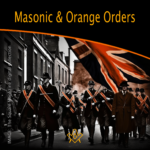 The masonic and orange orders: fraternal twins or public misperception? “Who’s the Mason in the black?” |
 Kenneth Jack's research reveals James Murray, 2nd Duke of Atholl – the 'lost Grand Master' |
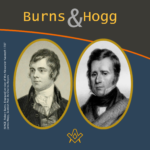 An Oration delivered to the Annual Burns and Hogg Festival, at Lodge Canongate Kilwinning, No. 2, Edinburgh, on 24 January 2018. By Bro. Kenneth C. Jack, FSAScot FPS, Past Master, Lodge St. Andrew, No. 814, Pitlochry. |
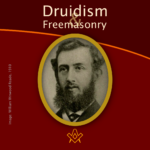 William Winwood Reade was a Scottish philosopher, historian, anthropologist, and explorer born in Crieff, Perthshire, Scotland. The following article by Kenneth Jack, provides some hints that William may have been a Freemason, but there is presently no definitive evidence he was. |
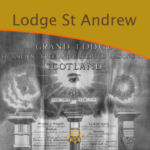 What's in a name? A brief history of the first Scottish Lodge in Australia - By Brother Kenneth C. Jack, Past Master, Lodge St. Andrew, No. 814, Pitlochry |
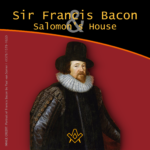 Sir Francis Bacon and Salomon’s House Does Sir Francis Bacon's book "The New Atlantis" indicate that he was a Rosicrucian, and most likely a Freemason too? Article by Kenneth Jack |
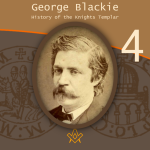 George Blackie – The History of the Knights Templar P.4 The final part in the serialisation of George Blackie's 'History of the Knights Templar and the Sublime Teachings of the Order' transcribed by Kenneth Jack. |
 George Blackie – The History of the Knights Templar P.3 Third part in the serialisation of George Blackie's 'History of the Knights Templar and the Sublime Teachings of the Order' transcribed by Kenneth Jack. |
 George Blackie – The History of the Knights Templar P.2 Second part in the serialisation of George Blackie's 'History of the Knights Templar and the Sublime Teachings of the Order' transcribed by Kenneth Jack. |
 George Blackie – The History of the Knights Templar P.1 First part in the serialisation of George Blackie's History of the Knights Templar and the Sublime Teachings of the Order – by Kenneth Jack |
 Little known as a Freemason, Bro Dr Robert ‘The Bulldog’ Irvine remains a Scottish rugby legend, and his feat of appearing in 10 consecutive international matches against England has only been surpassed once in 140 years by Sandy Carmichael. |
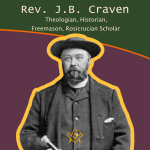 Rev. J.B. Craven: Theologian, Historian, Freemason, And Rosicrucian Scholar Archdeacon James Brown Craven is one of those unsung heroes of Scottish Freemasonry about whom very little has been previously written – here Kenneth Jack explores the life and works of this remarkable esoteric Christian. |
 Discover the powerful family of William Schaw, known as the 'Father of Freemasonry' |
 This month, Kenneth Jack invites us to look at the life of Sir William Peck; - astronomer, Freemason and inventor of the world's first electric car. A truly fascinating life story. |
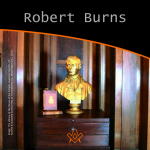 A Tribute to Scotland's Bard – The William Robertson Smith Collection With Burns' Night approaching, we pay tribute to Scotland's most famous Bard – The William Robertson Smith Collection |
 The Joy of Masonic Book Collecting Book purchasing and collecting is a great joy in its own right, but when a little extra something reveals itself on purchase; particularly with regards to older, rarer titles.. |
 Masons, Magus', and Monks of St Giles - who were the Birrell family of Scottish Freemasonry? |
 The 6th Duke of Atholl - Chieftain, Grand Master, and a Memorial to Remember In 1865, why did over 500 Scottish Freemasons climb a hill in Perthshire carrying working tools, corn, oil and wine? Author Kenneth Jack retraces their steps, and reveals all. |
 Charles Mackay: Freemason, Journalist, Writer Kenneth Jack looks at life of Bro Charles Mackay: Freemason, Journalist, Writer, Poet; and Author of ‘Tubal Cain’. |
 A Mother Lodge and a Connection Uncovered, a claim that Sir Robert Moray was the first speculative Freemason to be initiated on English soil. |
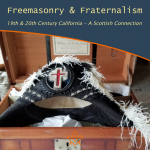 What is it that connects a very old, well-known Crieff family, with a former President of the United States of America? |
 The life of Bro. Cattanach, a theosophist occultist and Scottish Freemason |
 The Mysterious Walled Garden of Edzell Castle Explore the mysterious walled garden steeped in Freemasonry, Rosicrucianism, and Hermeticism. |
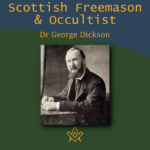 Dr. George Dickson: Scottish Freemason and Occultist Bro. Kenneth explores the life of Dr George Dickson a Scottish Freemason and Occultist |
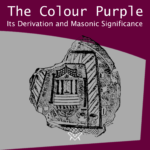 The Colour Purple - Its Derivation and Masonic Significance What is the colour purple with regards to Freemasonry? The colour is certainly significant within the Royal Arch series of degrees being emblematical of Union. |
 Bridging the Mainstream and the Fringe Edward MacBean bridging mainstream Freemasonry with the fringe esoteric branches of Freemasonry |
 Freemasonry in the Works of John Steinbeck We examine Freemasonry in the Works of John Steinbeck |
 Renegade Scottish Freemason - John Crombie Who was John Crombie and why was he a 'renegade'? |
 Scottish Witchcraft And The Third Degree How is Witchcraft connected to the Scottish Third Degree |
masonic knowledge
to be a better citizen of the world
share the square with two brothers

click image to open email app on mobile device
